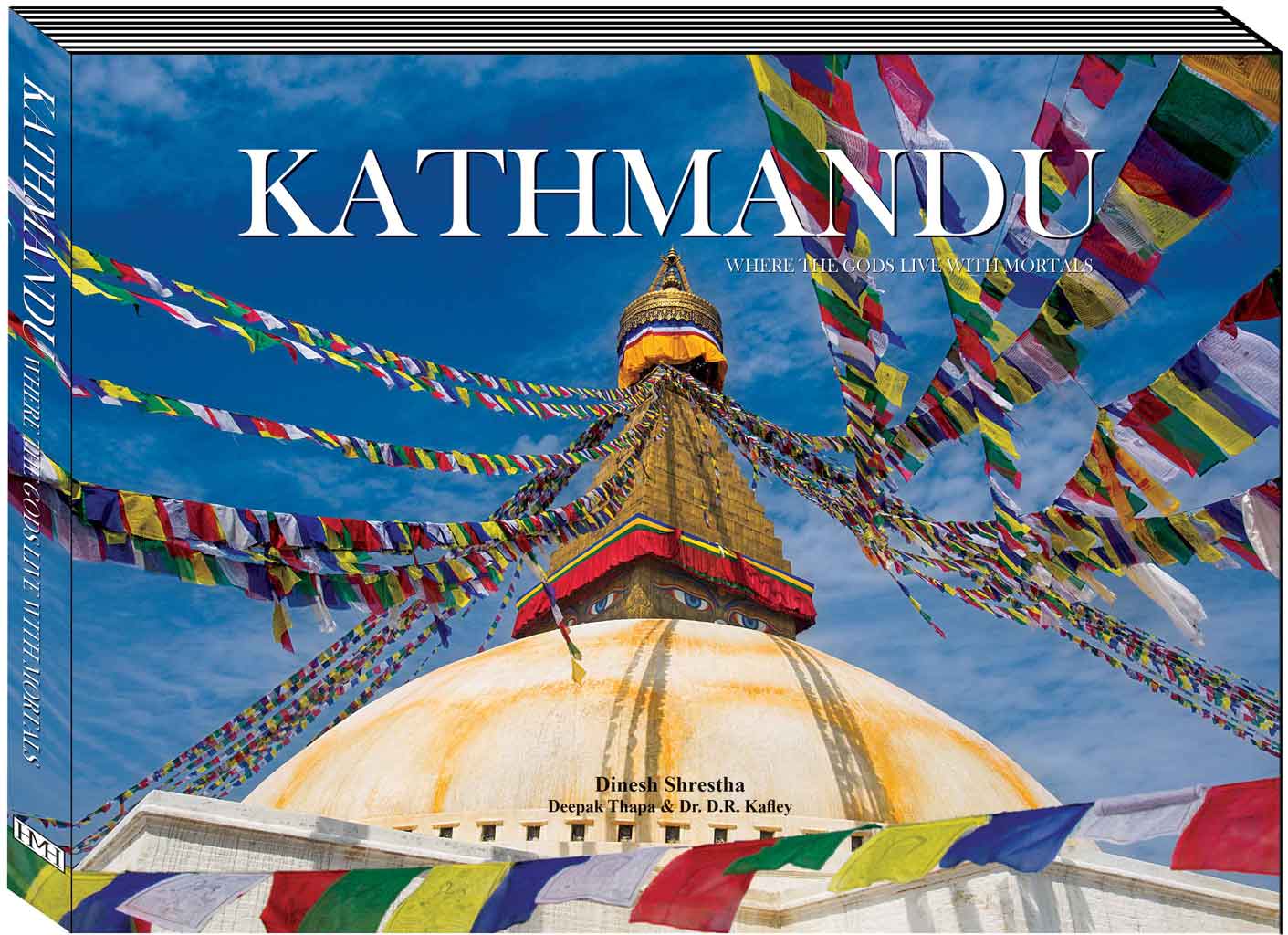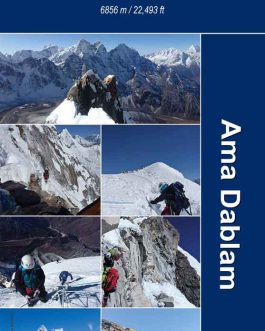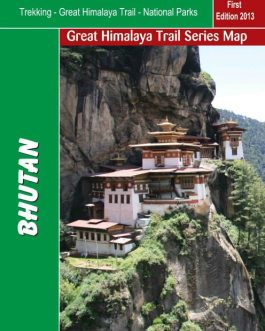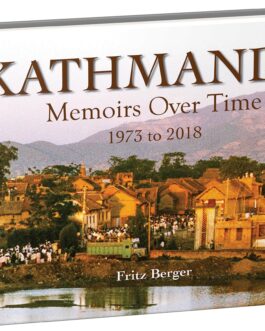Description
Title: Kathmandu Where the Gods Live With Mortals
Subtitle: Where the God lives
Author: Dinesh Shrestha & Deepak Thapa
ISBN:-99933-47-36-1
pages:- 128
Edition: 2014
Language: English
Bound: Soft Cover
Short Inrtoduction of the Book:
These words of longing by singer-songwriter Cat Stevens could have been penned by anyone who has been captivated by the charms of Kathmandu over the centuries. It is a place that has meant so much to so many: the playground of the gods; an ancient civilisation where myths come alive in festivals; a fabled valley believed to have inspired the legend of the Shangri-la; journey’s end for hippies of yore seeking earthly salvation; first stop for the great mountaineers on their way to conquer the mighty peaks of the Himalaya; the muse of wonderstruck poets; the list can go on. Even the name Kathmandu has such an exotic ring that it has been adopted by a designer clothing company.
The history of Kathmandu goes back two thousand years, and all the grandeur of that past lives on in the everyday experience of the people. Legend has it that the Bodhisattva Manjushree drained the lake that once filled the Kathmandu valley and made it habitable. He founded a city for the first residents, setting in motion a process of building that has continued down the ages till today. Dynasties rose to power one after the other, only to be lost in the march of time, but every one of them Left behind fabulous testimonies of their presence. Some continue to live on in mythical stories, others speak out from the grand edifices they put up, and a few have Left their mark in the numerous festivals they initiated.
Written record of life in the valley begins only in the 5th century CE. But legends hold sway over the imagination here and the period before that is not easily forgotten. Thus, the serpent gods who had to be relocated when the lake vanished are appeased every year. Then there is the story of a king slain by the gods but who lives on as a revered deity himself. No less is the exploit of a priest who received a boon from a god to build a sizeable temple from the wood from a single tree. This last is the not-yet-consecrated temple of Kasthmandap, from which is derived the name Kathmandu.
As an extremely fertile valley in the lap of the Himalaya, Kathmandu developed a highly sophisticated urban culture early on. Writings by Chinese travellers in the 7th century speak of the magnificence of the palaces and a royal court that could stand up to any other of the time. Some remnants of that glorious past have survived to the present day. But we have to wait until 1200 CE before Kathmandu was taken over by the dynasty that gave form to its unique cultural and physical landscape—the Mallas.
The Mallas were to rule Kathmandu for more than 500 years. As kings of a rich valley that also straddled the lucrative trade route between the Indian plains and the Tibetan plateau, they soon became the most powerful force in the region. But rather than expend their resources on territorial expansion, they turned their attention inward and developed a civilisation without parallel in the entire Himalaya. Great builders of temples and palaces, they also patronised the arts and raised Kathmandu valley culture to great heights.
The construction of monuments reached it pinnacle during the later centuries of Malla rule. The valley had been divided into three separate Malla kingdoms, and the royal cousins competed to outdo each other in grandeur and scale of their buildings. The results of this rivalry is what gives Kathmandu valley some of its most wondrous sights, including the three palace squares of Kathmandu, Patan and Bhaktapur, all of which are World Heritage Sites.
If it is the architectural splendour that strikes the eye of the newcomer, those who linger on gradually realise that cultural life in Kathmandu is equally fascinating. It becomes difficult to tell whether it is the three major cities or the numerous little towns spread across the valley that are the more enchanting. Quite well known is the syncretism of Hinduism and Buddhism in which the customary distinctions between religions do not make sense. The intermingling of these two great spiritual traditions are evident everywhere, whether it be the juxtaposition of Hindu and Buddhist temples or the simultaneous employment of ritual specialists from both religions during life-cycle rites or the veneration of the same god, albeit as different deities, by Hindus and Buddhists alike. Then there are the numerous festivals of the Newars, the original inhabitants of the valley. Barely a day goes by without the sounds marking the celebration of a god or a historical event. Perhaps more in number are gatherings of the many religious and clan societies the Newars are famous for. The larger of these bring together people from far and wide while there are many that would be known only to the initiated. Some begin early in the morning, others late in the evening and go on through the night. But all have their share of fun and frolic, and made all the merrier by copious quantities of liquor drunk all around.
The lifestyle of the Newars evolved over the centuries. It was to the credit of this old civilisation that successive waves of migrants and invaders soon found themselves integrated into Kathmandu society. The newcomers were not only themselves enriched by this experience but also introduced novel elements into the host culture. It is for this reason that in Newar culture one can find traces of a tribal past such as the worship of animist gods and also strong elements of the highly developed Hindu caste system from the plains of India. Kathmandu’s festivals also reflect the diverse roots of this culture.
Newar society received its strongest blow with the downfall of the Mallas. While their mutual antagonism had provided the impetus for the cultural flowering that was to make Kathmandu famous, their disunity also attracted the attention of outside powers which looked upon the rich valley with covetous eyes. After repulsing waves of attacks by various king over the centuries, in 1768-69, the three Malla kingdoms were conquered by the ruler of the small principality of Gorkha, just west of the valley.
The Shah rulers of Gorkha moved their capital to Kathmandu and ultimately expanded their dominion further afield to give shape to Nepal as we know it today. But, most significantly, in a break from the valley’s past, the new rulers made no attempt at assimilation. In any case, the times were changing. The growing British presence in India could not be ignored and their influence was soon felt in Kathmandu, at least among the ruling elite. Most conspicuous were the scores of palatial buildings that sprang up on the outskirts of the old Kathmandu city. And instead of blending in with what already existed, these palaces and mansions were copied from the Europeans and built in the neo-classical style.
For the rest of the populace, life in general went on as usual with their farming, trading and, of course, festivals. This was by force rather than choice since for more than a hundred years, until 1951, the rulers kept the people insulated from the outside world. But after the 1950s, modernisation entered the lives of the people rapidly. Together with the introduction of modern styles of living, it was the transformation of the physical landscape of the valley that became most evident..
As the capital of Nepal and the only city equipped with modern amenities, the valley attracted migrants from all over the country. Kathmandu began to change as the urban space expanded out of the old city cores of Kathmandu and Patan. It was a process that accelerated during the 1970s and the 1980s and is still going on till today. This has resulted in a major change in the valley’s population and the Newars now find themselves in a minority.
The growth of Kathmandu and Patan (Bhaktapur remains as yet quite untouched) into modern cities has also led to a considerable erosion of traditional values among the Newars themselves. As the first urban residents of Nepal, they were often among the first to take to a cosmopolitanism that is slowly being adopted by the Nepali society. Yet, for a large number of Kathmandu residents, particularly in the smaller towns, life continues as it has for centuries. The daily rounds of the temples, the periodic communal feasting, the occasional celebration of festivals, all continue unaffected amid the growing pressures of modern life. Perhaps, it is not very easy to ignore your neighbours, especially when they are gods.








Reviews
There are no reviews yet.